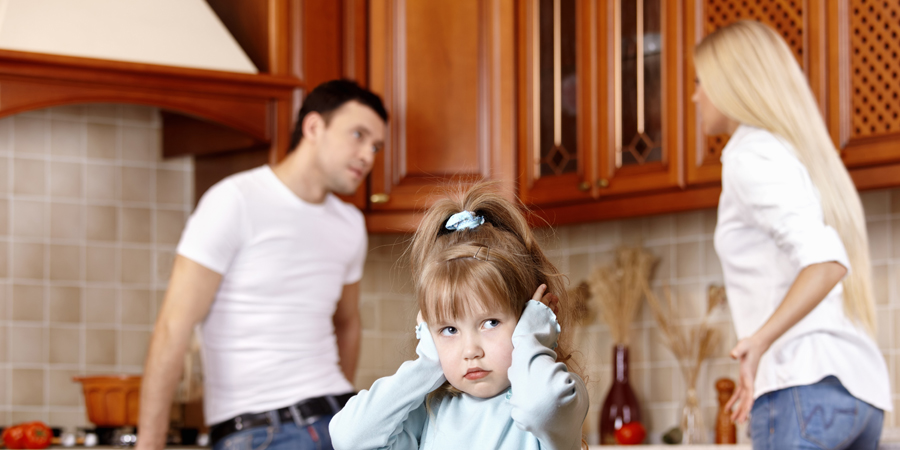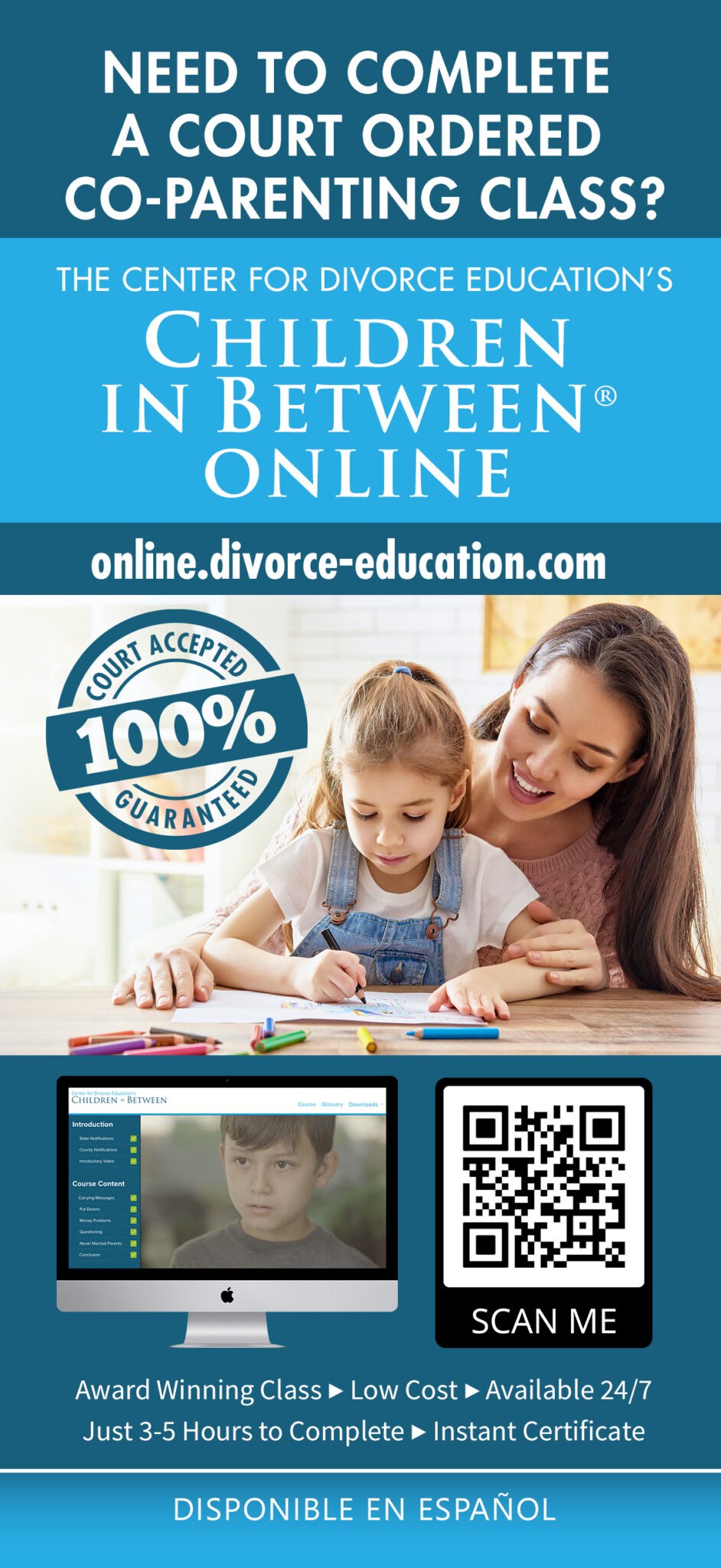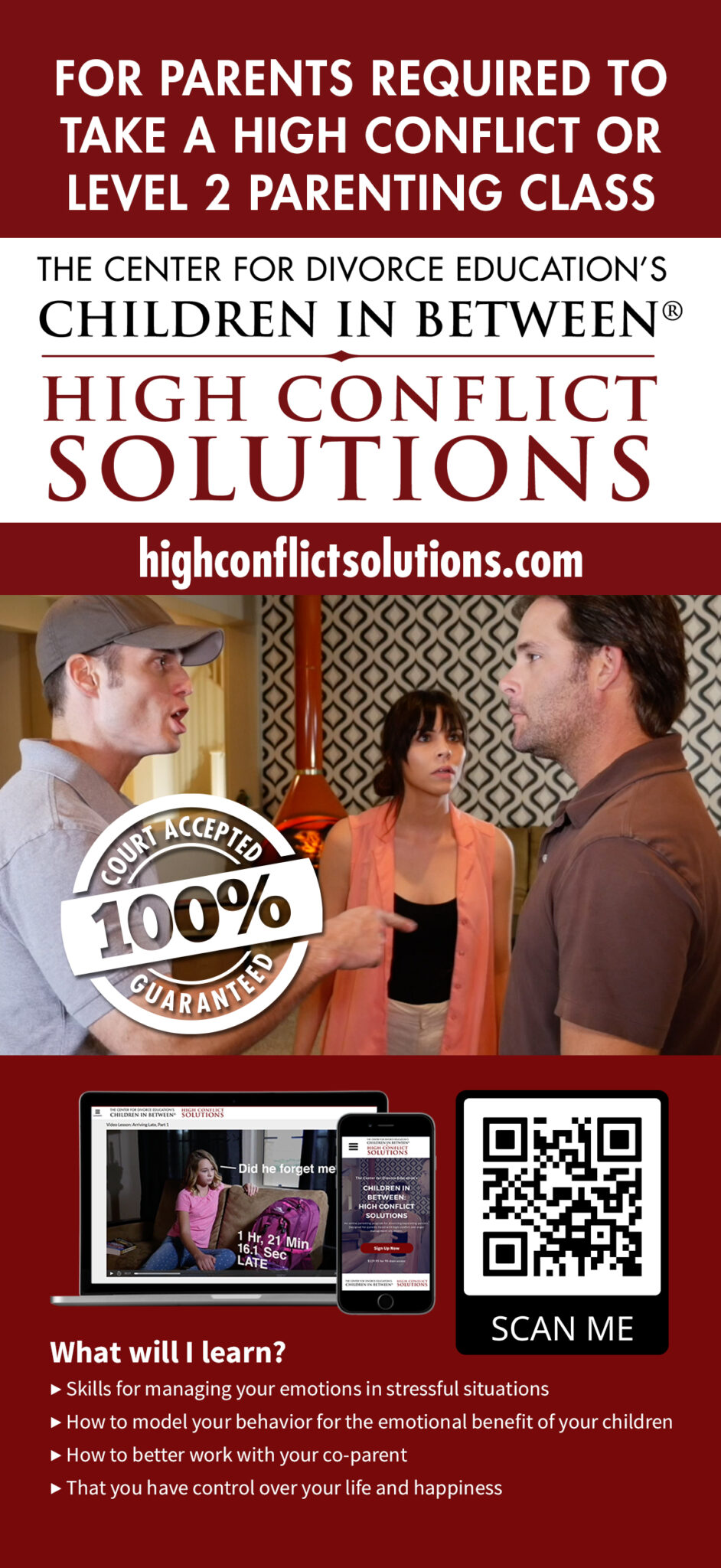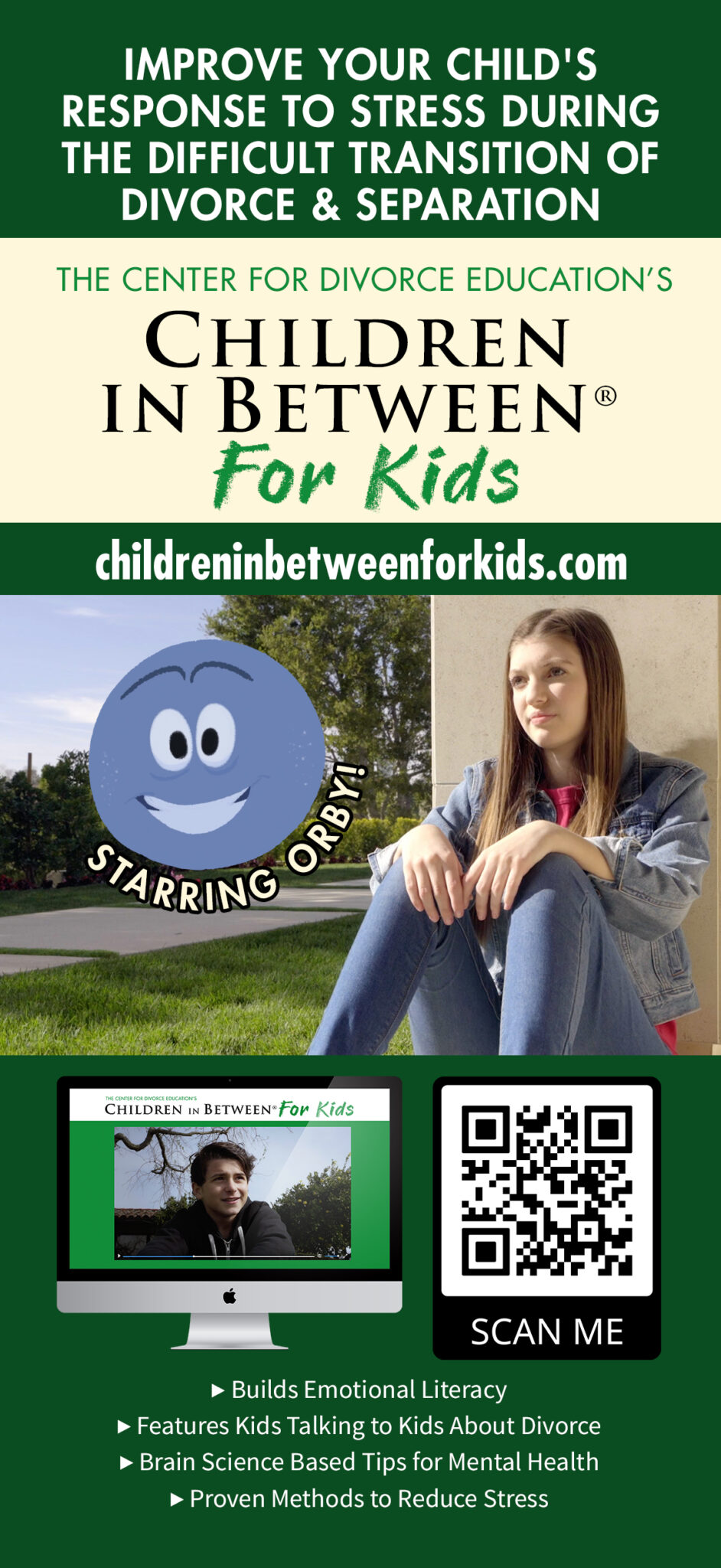The Center for Divorce Education's “High Conflict Solutions” course is intended to help parents manage stressful and difficult situations during separation or divorce.
The skills learned during the course will help parents protect their children from conflict. The course curriculum has been created by Dr. Donald Gordon, one of the nation’s leading experts in the field of divorce education and its impact on children.

For more than thirty years, The Center for Divorce Education has been dedicated to helping parents and children deal with the difficult process of divorce and separation. Based on our extensive research, we have developed highly effective methods for reducing the stress of divorce and separation for all parties. Our interactive, skills-based approach has been recognized by experts among the top programs being offered today.
Module Highlights:
The curriculum covers a wide range of topics, including effective communication strategies, managing emotional responses, and practical tips for creating a stable environment for children amid the changes.
Interactive Learning
The course utilizes a mix of interactive tools like role-playing scenarios, quizzes, and reflection exercises, making the learning experience both engaging and effective. A very strong instructional design makes the material and skills memorable. It can be taken in intervals on any internet ready device. The course uses the latest teaching methods to help parents retain the skills that will enable them and their co-parent to navigate a difficult divorce/separation.
In-Depth Resources
Every module provides a wealth of resources, including expert articles, case studies, and best practices, ensuring that parents have access to comprehensive information to help them through this challenging period.
Resources for Courts
To view the Course Background and Description booklet, specifically designed for Court Officials, click HERE.
Need referral cards to hand out to parents?




*Included in SAMHSA's National Registry of Evidence-Based Programs and Practices
© 2025 The Center for Divorce Education






